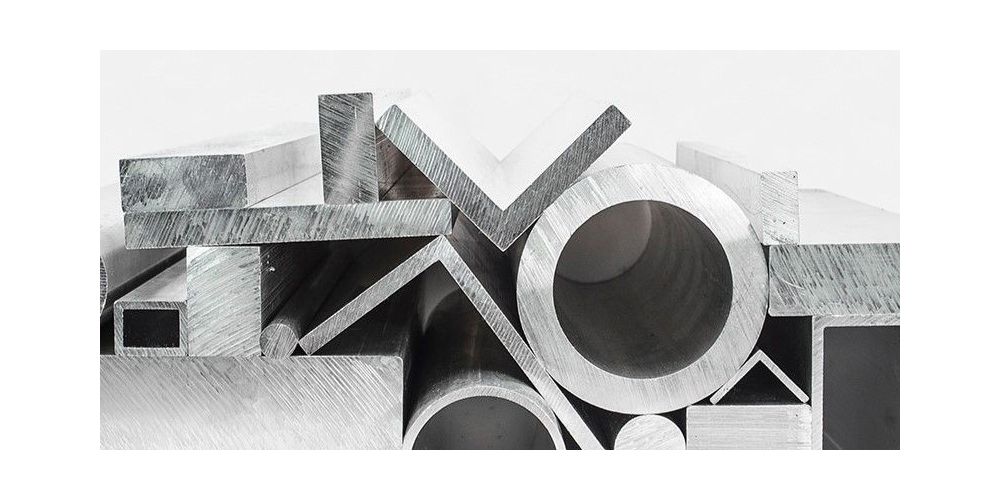Mild steel, also known as plain-carbon steel, is an extremely versatile and affordable type of steel. As the name suggests, it has a relatively low carbon content – typically 0.05% to 0.25% - making it more malleable and ductile than other steel alloys.
What is Mild Steel Made Of?
The main ingredients are simple: iron and carbon. Mild steel contains iron (about 99%) and a small amount of carbon (typically 0.25% or less). The low carbon content means it’s a softer, more pliable steel that can be shaped and formed easily.
How is Mild Steel Produced?
Mild steel is made via a basic oxygen furnace process. Molten iron ore is combined with varying amounts of steel scrap and other alloys to produce different grades of mild steel. The steel is then cooled and formed into a variety of shapes for various applications.
Rolled steel
The most common type, rolled steel is passed between rollers to produce square bars, rods, plates, sheets and strips.
Forged steel
Compressed under extreme heat and pressure, forged steel is dense and strong, used for tools, crankshafts and gears.
Cast steel
Molten steel is poured into moulds to produce complex shapes, used for machine parts like hydraulic cylinders.
Properties and Characteristics of Mild Steel
Mild steel gets its name from its low carbon content. This makes it a highly versatile and useful material, but it does come with some important properties to keep in mind.
Malleability
For example, mild steel is highly formable and ductile, meaning it can be shaped and moulded without cracking. This is because its microstructure consists of ferrite and pearlite, making it softer than high-carbon steels. Mild steel can be hot-rolled, cold-rolled, forged, cast and welded easily.
Strength
However, mild steel is not the strongest or hardest steel. It has a tensile strength of around 350-620 MPa, meaning it can withstand moderate loads and impacts before fracturing. Mild steel also has a low melting point (around 1400-1500°C) so it loses strength rapidly at high temperatures.
Corrosion Resistance
Mild steel has little corrosion resistance and will rust quickly when exposed to moisture. To prevent this, mild steel is often galvanised (coated in zinc), painted, or treated to form a protective oxide layer. Mild steel is a highly reactive metal, so it is incompatible with strong acids and alkalis.
Magnetism
Mild steel contains iron, so it is a magnetic metal. Its ferrite content means it is strongly attracted to magnets, which is useful for certain industrial processes. However, the level of magnetism depends on the amount of carbon, as more carbon reduces magnetism.
Cost
Mild steel is an affordable, economical alloy. It is inexpensive to produce and work with, while still providing useful mechanical properties. This makes it ideal for large-scale construction and manufacturing where material costs are a concern.
Types of Mild Steel
Mild steel comes in a variety of types to suit different applications. The most common are:
Low-carbon steel
Contains less than 0.3% carbon. It's cheap, ductile and workable, but not very hard, making it useful for manufacturing bolts, nuts, and structural shapes.
Medium-carbon steel
Has 0.3-0.6% carbon. Stronger than low-carbon steel and suitable for shafts, gears, and axles.
High-carbon steel
Contains 0.6-1.0% carbon. Very hard, but brittle, used for cutting tools, springs, and knives.
Grades of Mild Steel
Mild steel also comes in various grades, categorised on their chemical composition. This determines its strength, durability and malleability. Some of the most common types on the market are:
A36
A36 is a low-carbon steel with good strength and formability. It has a carbon content of 0.25% and a tensile strength of 400-550 MPa. A36 is one of the most popular grades of structural steel used for beams, plates and sheets in the construction industry. This versatile mild steel is suitable for welding and can withstand high heat.
S275JR
S275JR has a carbon content of 0.2% and a tensile strength of 410 MPa. It is a non-alloy structural steel used in a variety of welded, bolted and riveted constructions. S275JR is mainly used for bridges, buildings and general engineering structural applications. This mild steel grade is easily weldable and machinable.
S355JR
S355JR has a carbon content of 0.24% and a tensile strength of 470-630 MPa. It is a high-strength, low-alloy structural steel used in a variety of welded, bolted and riveted components, such as bridges, overhead cranes and buildings. S355JR provides high yield and tensile strength with good formability and weldability.
Other common mild steel grades are Q195, Q215, Q235B and Q345B. The Q refers to the yield strength, 195 means the yield strength is 195 MPa. These Chinese steel grades have similar properties and applications as the EN standards like S275JR and S355JR.
Uses and Applications of Mild Steel
Mild steel has many useful applications due to its versatility and affordability, and can be found almost everywhere in our daily lives.
Construction
Used extensively in building construction, mild steel provides structural support for large buildings through steel beams and reinforcement for concrete through steel rods; furthermore, corrugated sheet metal made of mild steel serves as roofing and siding while steel pipes efficiently transport water and gas throughout structures. With its inherent strength and durability, mild steel is an ideal material for the construction industry.
Transportation
Serving as an indispensable material in the transportation industry, mild steel constitutes the ships, trains, cars, and aircraft that move people and goods around the world; specifically, the valued strength-to-weight ratio of mild steel alloys allows vehicles to achieve an optimal balance of lightness and sturdiness through the use of steel plates, beams, chassis, and frames.
Tools & Equipment
The versatility and affordability of mild steel make it a vital component in many common tools, appliances, and pieces of equipment, ranging from wrenches and pliers to ovens and refrigerators to diverse industrial machinery; its ability to withstand high heat and physical stresses while being readily shaped into specific forms lends it well to these functions.
Containers
Capitalizing on mild steel's capacity to maintain its form, containers of all varieties including drums, tanks, bins, and cans rely on this material to store and transport liquids, powders, granules, and other contents securely in factories, kitchens, and everywhere in between.
Art & Decor
Beyond its practical applications, mild steel also possesses decorative qualities stemming from its malleability, as evidenced by the ornate wrought iron gates, railings, and furniture that ornament public spaces and homes; moreover, mild steel has been embraced as an artistic medium for renowned public sculptures and develops an attractive patina when treated with oils or lacquers.
Browse our range of mild steel stock online, with free custom cutting on all sheets and profiles, including angle iron, t-section, bar and box section.


